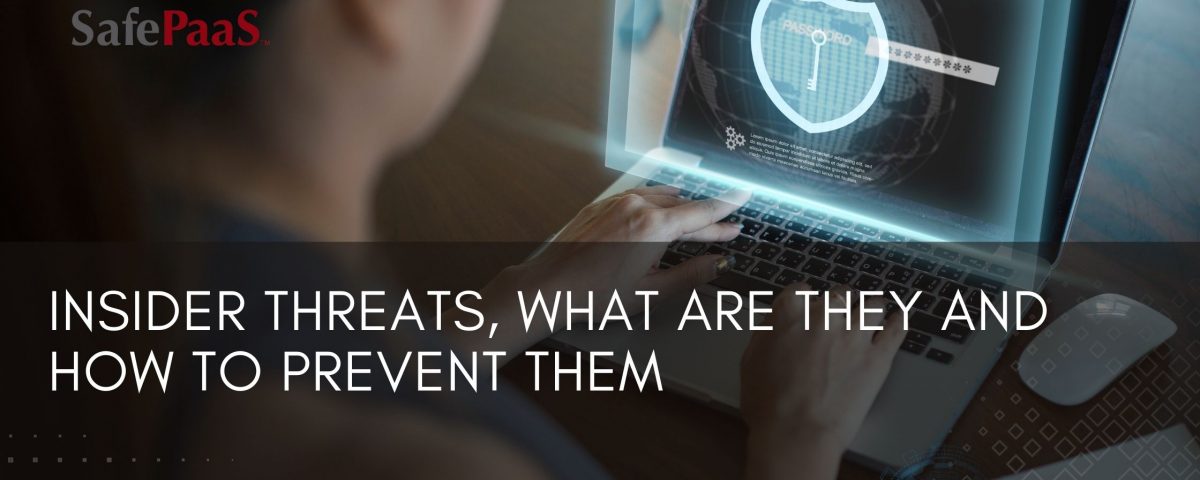Insider Threats and how to prevent them


Insider Threats
What you don't know could cost you millions
Cybersecurity budgets have grown exponentially over the past five years. Many analysts predict worldwide cybersecurity spending to exceed $1.75 trillion between 2021 and 2025.
Yet, looking at the headlines is all the proof you need to see that cybersecurity professionals are losing the war. Every year, thousands of major brands, including Coca-Cola, GE, and SolarWinds, are forced to announce they have been the victim of a malicious actor from inside their organizations. Thousands of organizations fall victim to data breaches, document exfiltration, theft, and fraud each year.
If trillions of dollars are being spent on cybersecurity, why are insider threats increasing, who is responsible for them, and what can your organization do to prevent them?
What is an insider?
An insider is anyone who has authorized access to or knowledge of an organization’s resources. These resources include personnel, facilities, information, equipment, networks, and systems.
Examples of an insider may include:
Employees, organization members, contractors, or anyone supplied a computer and network access by the organization
A person who develops products and services with knowledge of the products, pricing, strategy, goals, and future plans of the organization
In government functions, a person with access to protected information that could cause damage to national security and public safety
What is an insider threat?
The Cyber and Infrastructure Security Agency (CISA) defines an insider threat as someone who uses their authorized access, intentionally or unintentionally, to harm the organization’s mission, resources, personnel, facilities, information, equipment, networks, or systems. More simply, insider threat actors are people with legitimate access to your data or security network.
There are various motivations behind malicious activities, but the most common are:
Fraud - involves deceit intending to gain at the expense of the business illegally or unethically or to steal, modify or destroy data.
Sabotage - using legitimate network access to destroy or damage business systems or data.
Espionage/Spying - is the theft of company data or information for another organization, government, or competitor.
Intellectual property theft - is the theft of a company’s patents, designs, or inventions, usually with the intent of resale.
5 types of insider threats
Malicious insiders
A malicious insider is an employee or contractor that acts out of spite or revenge for perceived wrongdoing. For example, a malicious insider may exfiltrate valuable information, such as intellectual property, personally identifiable information, or financial data.
Careless employees
Careless employees are a common threat that exists in most companies. Usually, these employees are unaware of the security implications their behaviors pose to the company. A careless employee leaves their computer open during a break or at the end of the day or grants sensitive account access to regular users because they are friends. These actions create security openings that allow insider threats to develop.
Third-party vendors
Most organizations outsource some of their services to a third party. Sometimes these third-party organizations do not have sophisticated security protocols and are easy targets for cyber attackers. If these companies have privileged access to your company network, bad actors can infiltrate your system, compromising the partner's security network and resulting in a third-party data breach.
Ex-employees
Employees who have departed the company are a common insider threat. When employees leave the company involuntarily, they may feel that part of the company's intellectual property is theirs, justifying their urge to take this information. Employees stealing patents and inventions can harm the company's ability to compete in the market.
Policy dodgers
Policy dodgers are employees who take shortcuts or fail to follow security rules designed to protect company data. These employees may decide to create workarounds to tedious and inconvenient policies and compromise security and control over company data.
Why are insider threats on the rise?
Businesses today of all shapes and sizes are incredibly susceptible to insider threats. And a report by Cybersecurity Insiders confirmed this fact. In their most recent survey, Cybersecurity Insiders found that 66% of organizations feel moderately to extremely vulnerable to insider threats. Of the respondents, only 2% say they are not at all vulnerable to an insider attack.
Another factor making detecting insider attacks more difficult is the shift toward cloud computing, confirmed by 53% of cybersecurity professionals responding to the survey. With the adoption of the cloud and the abundance of applications being supported, IT ecosystems are becoming increasingly complex and disconnected. More than half of security professionals responded that security teams are being asked to do more with less and may lack adequate training. The combination of these factors is the main culprit providing inroads for individuals to compromise your systems wittingly or unwittingly.
The same survey from Cybersecurity Insiders found that 50% of security professionals find internal attacks are more difficult to detect and prevent than external cyber-attacks. Insider attacks are more difficult to detect because insiders have approved access privileges, and it can be challenging to distinguish legitimate use cases from malicious attacks. And only 37% of organizations consider themselves extremely effective when monitoring, detecting, and responding to insider threats.
There are many ways insider threats impact the organization. This year, the loss of critical data was the primary impact (40%). And operational disruptions are among the top three challenges organizations experienced from insider attacks. The survey also noted a significant decrease in the percentage of companies that feel they can operate successfully due to insider attacks since last year (54% to 33%).
The cost of insider attacks
According to The Ponemon Institute’s report, “2022 Ponemon Institute Cost of Insider Threats: Global Report,” the average cost of an insider threat is $15 million.
Insider threats continue to be a poorly controlled risk to organizations worldwide. Each year insider threats account for the loss of mission-critical data, downtime, lost productivity, and reputational damage. Organizations must invest in a comprehensive security solution to help with real-time detection and prevention.
Not surprisingly, credential theft continues to be the costliest insider security incident. Implementing a privileged access management (PAM) program using a solution like SafePaaS Fire Fighter ID is a best practice for mitigating privileged access risk. Additionally, a strong Access Governance solution like AccessPaaS™ can ensure that all user access is appropriately assigned, access approvals are obtained, and the proper checks and balances are in place to prevent and detect insider threats.
How to effectively manage user privileges
Many organizations employ poor manual processes for the management of user privileges. With plenitude systems and applications to manage, a lack of centralized control, highly manual processes, and an unclear understanding of the necessary access required for each role, it’s no wonder managing user privileges is inadequate in most organizations. One way to address this is to automate the provisioning of the user lifecycle. An integrated solution is vital to a solid IGA policy to manage user access effectively.
Another effective insider threat mitigation strategy is the implementation of policy-based access controls (PBAC). This means having solid, well-defined policies and knowing which access privileges each role requires. As organizations grow and evolve, the right IGA solution can allow for more efficient changes and decrease risk by focusing on policies and assignments rather than roles.
Insider threat prevention
Each year considerable attention is given to combating external threats, and security teams may miss what is happening inside the organization. However, a layered approach to insider threat protection can ensure the appropriate defenses in your security strategy and policy. Below are three strategic areas of focus to navigate insider threat prevention:
Prevention: Strong identity and access management solutions by nature assist in preventing inside threat actors.
Deterrence: 63% of respondents from the Cybersecurity Insiders report said they are focused on deterrence and detection of internal threats. The best insider threat deterrence is strong access controls and robust security policies in place to deter and prevent insider threats.
Detection: 48% of respondents indicated that detecting insider threats in their environment is critical in preventing insider attacks. Detection involves monitoring what users are doing and ensuring visibility into user privileges and network activities.
Insider attacks are becoming common with costs in the millions of dollars annually. But your company can take an active part in preventing them. By monitoring for threats and providing security teams with innovative security solutions, like those offered by SafePaaS, you can leverage a layered security solution that positions your organization for success. An ounce of prevention is worth a pound of cure. And adopting a risk strategy that emphasizes prevention and defense to mitigate insider threats in your organization can save you from paying for a pound of cure.
If you need to enhance your Identity Access Governance program or privileged access management, SafePaaS has industry-leading solutions you need to reduce the risk of insider threats.
Recommended Reading

Reduce Cloud ERP Risks
The most critical driver of configuration monitoring is to eliminate surprises. Nobody wants to be surprised with a control weakness or fraud.

How to prevent fraud risk with SoD
Many companies struggle to implement adequate SoD controls in their ERP systems even though the concept of SoD is simple. SoD roles, responsibilities, and access controls are difficult to define within your ERP. Below are the two most common reasons why SoD violations occur.

SoD and Privileged Access Policies
Detect access policy violations to control financial, operational, fraud, and cyber risks. Define policies in terms of risk descriptions, impact, likelihood, and fine-grained rules that constitute discrete and fuzzy logic in terms of IT system security entitlements and privileges for governance models such as Segregation of Duties, Sensitive Access, Data Protection, and Trade Secrets.

